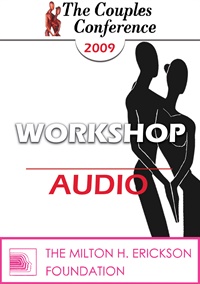CC09 Workshop 02 - Telling the Truth with Love - Terry Real, LICSW
- Average Rating:
- Not yet rated
- Topic Areas:
- Workshops | Couples Therapy | Love | Relational Life Therapy Model (RLT) | Intimacy
- Categories:
- Couples Conference | Couples Conference 2009 | Pioneers in Couples and Family Therapy
- Faculty:
- Terry Real, LICSW
- Duration:
- 1:55:39
- Format:
- Audio Only
- Original Program Date:
- May 01, 2009
- License:
- Never Expires.
Description
Description: This session presents a practical approach to Relational Life Therapy™, focusing on the interplay between grandiosity and shame, and the importance of addressing both indulgence and deficiency. It introduces the concepts of “latent” and “blatant” partners, emphasizing leverage, empowerment, and therapist transparency. Strategies include setting safe conditions for therapy, managing untreated disorders, calling forth the functional adult, and fostering relational joy over mere gratification.
Syllabus Description: This workshop will introduce participants to some of the basics of Relational Life Therapy™, a truth-driven therapeutic approach. Participants will learn how to speak with radical precision and honesty to their clients about what they're doing to de-rail their relationships. You will learn how to "join through the truth" in a way that feels both profoundly respectful and compassionate while, at the same time, pulling no punches. We will look at gathering leverage, separating the person from their behavior, looking at the particular issues of grandiosity, and how to enlist a coalition with the adult part of the client.
Educational Objectives:
- To describe three ways to become a highly functioning co-parenting team with your partner.
- Given a challenging case of parenting, show how to create radical and lasting parenting change.
*Sessions may be edited for content and to preserve confidentiality*
Credits
Handouts
| Timestamped Transcript (821 KB) | 18 Pages | Available after Purchase |
| Timestamped Transcript (849.3 KB) | 19 Pages | Available after Purchase |
| Ericksonian Learning Snapshot (253.6 KB) | 2 Pages | Available after Purchase |
Faculty

Terry Real, LICSW Related Seminars and Products
Terry Real, LICSW, is a nationally recognized family therapist, author, and teacher. He is particularly known for his groundbreaking work on men and male psychology as well as his work on gender and couples; he has been in private practice for over twenty-five years. Terry has appeared often as the relationship expert for Good Morning America and ABC News. His work has been featured in numerous academic articles as well as media venues such as Oprah, 20/20, The Today Show, CNN, The New York Times, The Wall Street Journal, Psychology Today and many others.


